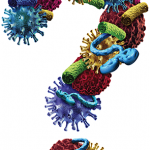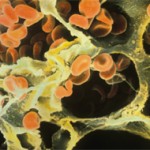ATLANTA—The American College of Rheumatology (ACR) has released new recommendations for the treatment of ankylosing spondylitis (AS) and non-radiographic axial spondyloarthritis (SpA). The guideline was developed with the Spondylitis Association of America (SAA) and the Spondyloarthritis Research and Treatment Network. It summarizes recommendations for both pharmacologic and non-pharmacologic treatments, including rehabilitation, management of patients with…
Search results for: Primary care

EULAR 2015: Benefits of Individualizing Exercise Therapy
ROME, Italy—The medical environment is increasingly adapting to the possibilities of optimizing care by individualizing medical treatment and tailoring treatment to disease phenotypes. Data suggest that individualizing exercise therapy, an important treatment modality for rheumatic and musculoskeletal diseases, can help control disease, maximize function, minimize functional barriers and decrease the risk of co-morbidity.1,2,3 Personalizing exercise…

Diagnosing, Treating IgG4-Related Disease
In diagnosing and treating a disease that is rapidly gaining recognition worldwide since it was first recognized in Japan in 2003, 42 experts from 10 different countries recently collaborated to discuss and review the current experience and data on IgG4-related disease. The result is the “International Consensus Guidance Statement on the Management and Treatment of…
ACR Releases Two New Publications
Two new ACR publications, created in collaboration with the European League Against Rheumatism, aim to improve the treatment of patients with polymyalgia rheumatica (PMR) and introduce new classification criteria for gout…

Epratuzumab Results Disappointing, but Adalimumab Promising
Two Phase 3 trials have shown that epratuzumab did not meet its primary endpoints for treating SLE. Meanwhile, a Phase 3 study has shown adalimumab is effective for treating enthesitis-related arthritis in juveniles…

Biosimilar Drugs for RA Studied in Multiple Trials
Etanercept Biosimilars A number of Phase 3 trials are ongoing for etanercept biosimilars.1 One evaluation identified three trials in rheumatoid arthritis (RA) patients and one in psoriasis patients. The psoriatic arthritis trial evaluated PASI as a primary endpoint and the following secondary endpoints: PASI50, PASI75, PASI90, PASI score, laboratory values, ECG, adverse events (AEs), injection…

EULAR 2015: Biology of Fatigue Rooted in Genes, Cytokines, Free Radicals
ROME, Italy—Fatigue, a problem experienced frequently by patients with rheumatic diseases, is best thought of as a survival mechanism and as a single phenomenon, not a condition that comes in a variety of forms, an expert said in a session at EULAR 2015, the annual congress of the European League Against Rheumatism (EULAR). Gene Regulated…

Catastrophic Antiphospholipid Syndrome with Pulmonary Hemorrhage: A Case Report
Antiphospholipid syndrome (APS) is an autoimmune condition characterized by hypercoagulability often manifested as recurrent thrombosis or pregnancy complications, with persistently circulating antiphospholipid (aPL) antibodies or lupus anticoagulant. Catastrophic APS (CAPS), also known as Asherson syndrome, occurs in less than 1% of cases of APS and involves occlusive microangiopathy in at least three organ systems.1 Case…

Precision Medicine in Rheumatology May Improve Diagnosis, Disease Classification
In an interview with The Rheumatologist, J. Larry Jameson, MD, PhD, discusses the benefits and complications of precision medicine for rheumatologists and their patients, including advances in genetics, diagnostic tools and targeted treatments…

Phase 3 Studies Evaluate Lesinurad for Gout Treatment
For 12 months, two studies examined the use of lesinurad in combination with allopurinol to treat gout, with patients achieving reduced serum uric acid levels and demonstrating no severe toxicity.
- « Previous Page
- 1
- …
- 116
- 117
- 118
- 119
- 120
- …
- 139
- Next Page »